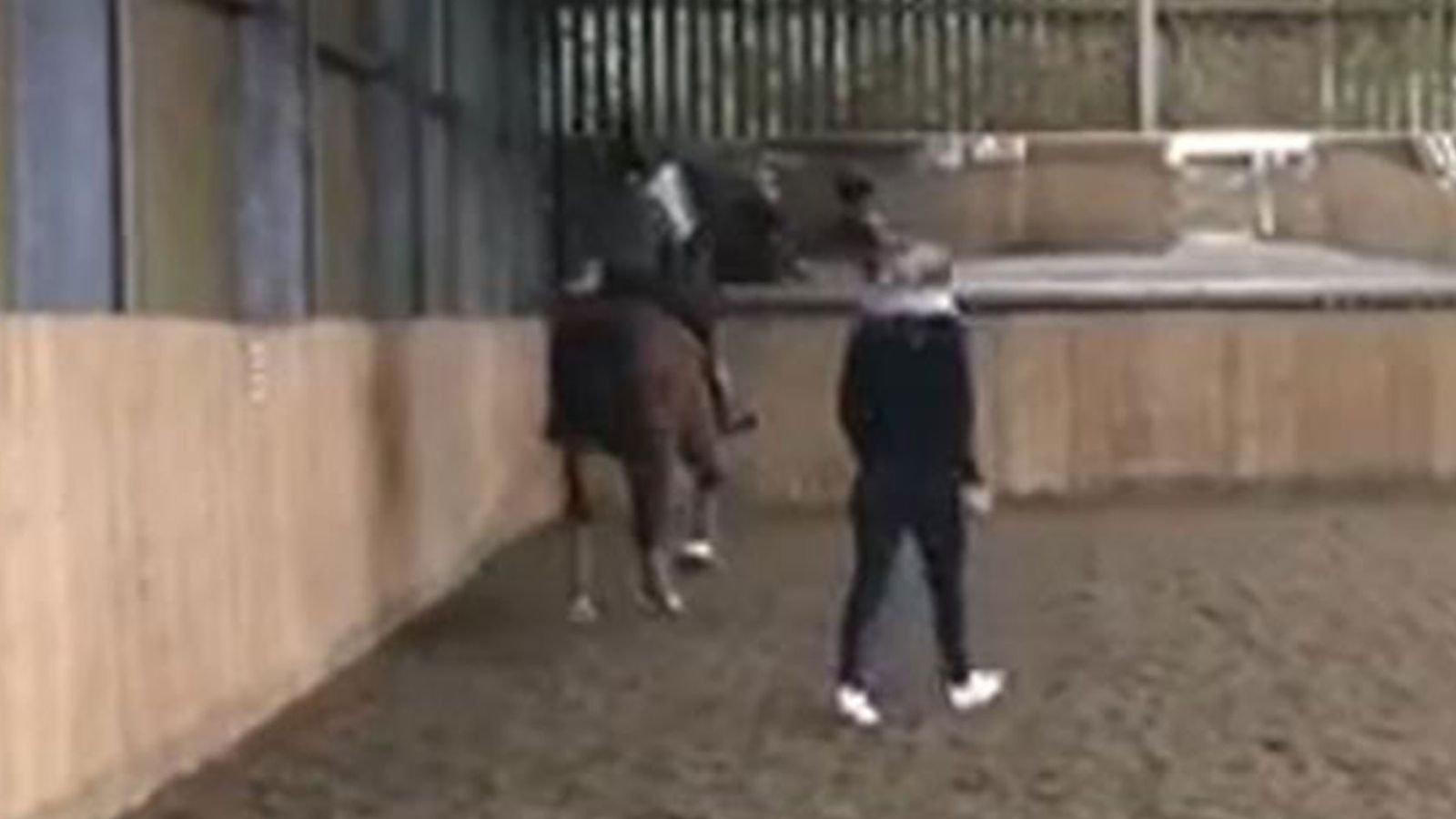A video has emerged showing British equestrian Charlotte Dujardin whipping a horse during a training session, sparking outrage among animal rights activists and horse enthusiasts alike.
In the video, which was reportedly filmed at Dujardin’s training facility in Gloucestershire, the Olympic gold medalist can be seen repeatedly striking the horse with a whip as she rides it around the arena. The horse appears to be visibly distressed and uncomfortable, with its ears pinned back and its tail swishing in agitation.
The footage has drawn criticism from animal welfare organizations, who have condemned Dujardin’s actions as cruel and unnecessary. PETA UK released a statement calling for an investigation into the incident and urging Dujardin to seek alternative training methods that do not involve the use of whips.
Dujardin, who is one of the most successful dressage riders in the world, has defended her use of the whip, stating that it is a standard training tool in the sport of dressage. In a statement released on social media, Dujardin explained that the whip is used to communicate with the horse and to encourage it to perform at its best.
However, many have argued that the use of whips in horse training is outdated and inhumane, and that there are more effective and compassionate methods for training horses. Some have pointed out that the horse in the video was clearly in distress and that the use of the whip only served to exacerbate its anxiety and fear.
The controversy surrounding the video has reignited the debate over the use of whips in equestrian sports, with many calling for stricter regulations and oversight to ensure the welfare of horses in training. As the sport of dressage continues to evolve, it is crucial that riders like Dujardin reconsider their training methods and prioritize the well-being of their horses above all else.
In conclusion, the video of Charlotte Dujardin whipping a horse in a training session has sparked widespread outrage and calls for reform within the equestrian community. It is imperative that riders and trainers prioritize the welfare of their horses and seek out alternative training methods that do not involve the use of whips. Only by working together to promote responsible and ethical training practices can we ensure the safety and well-being of these magnificent animals.
